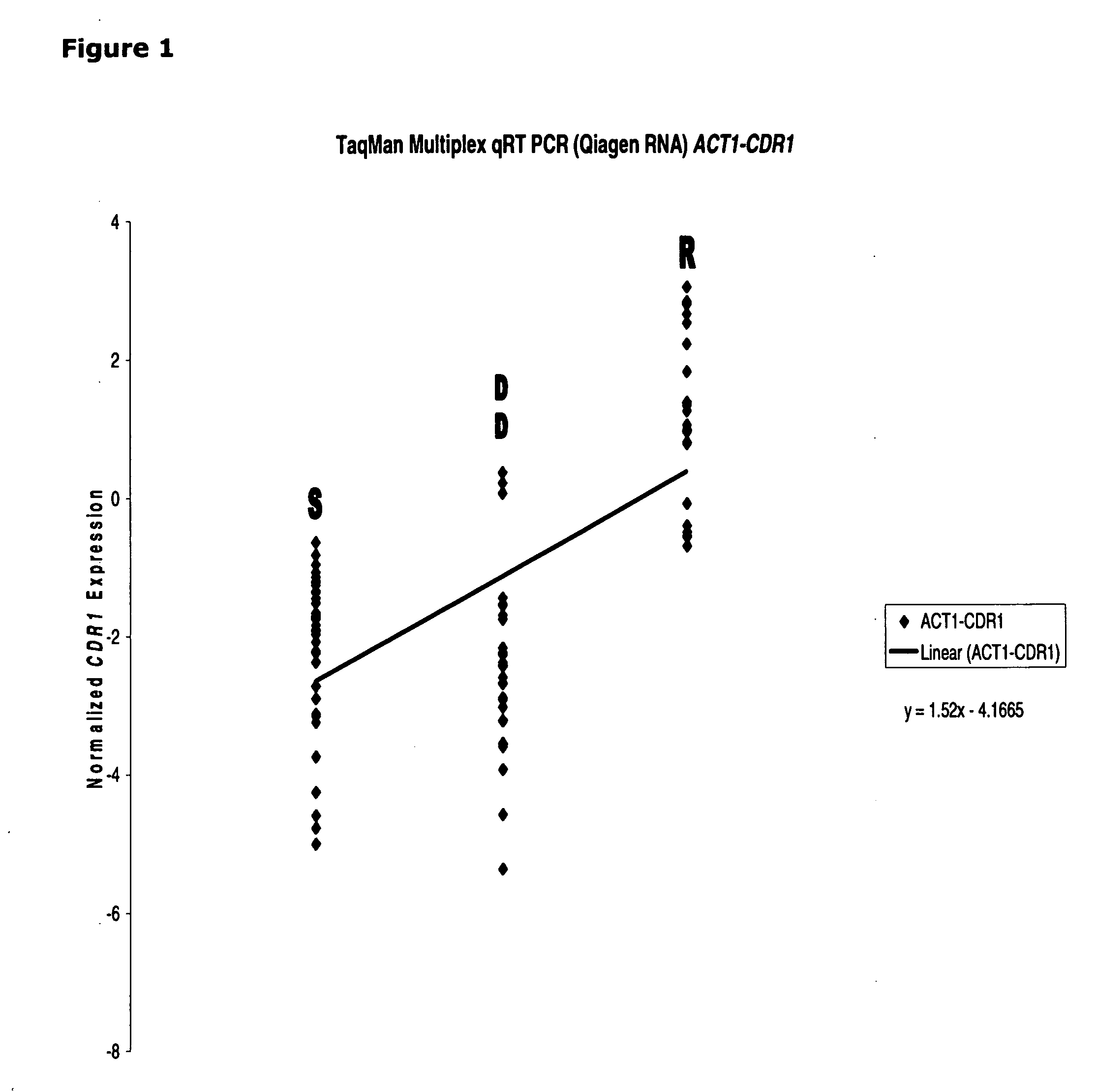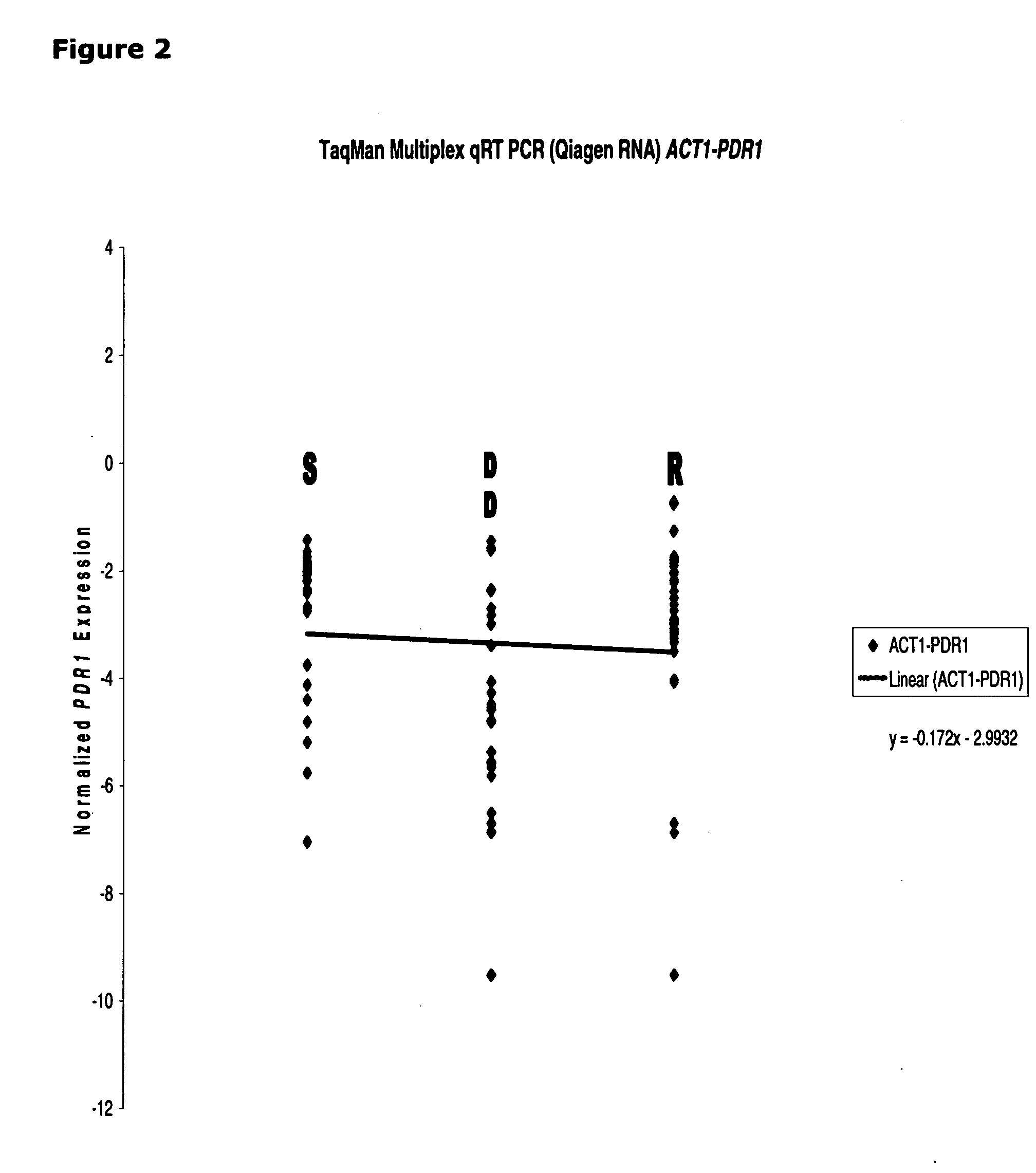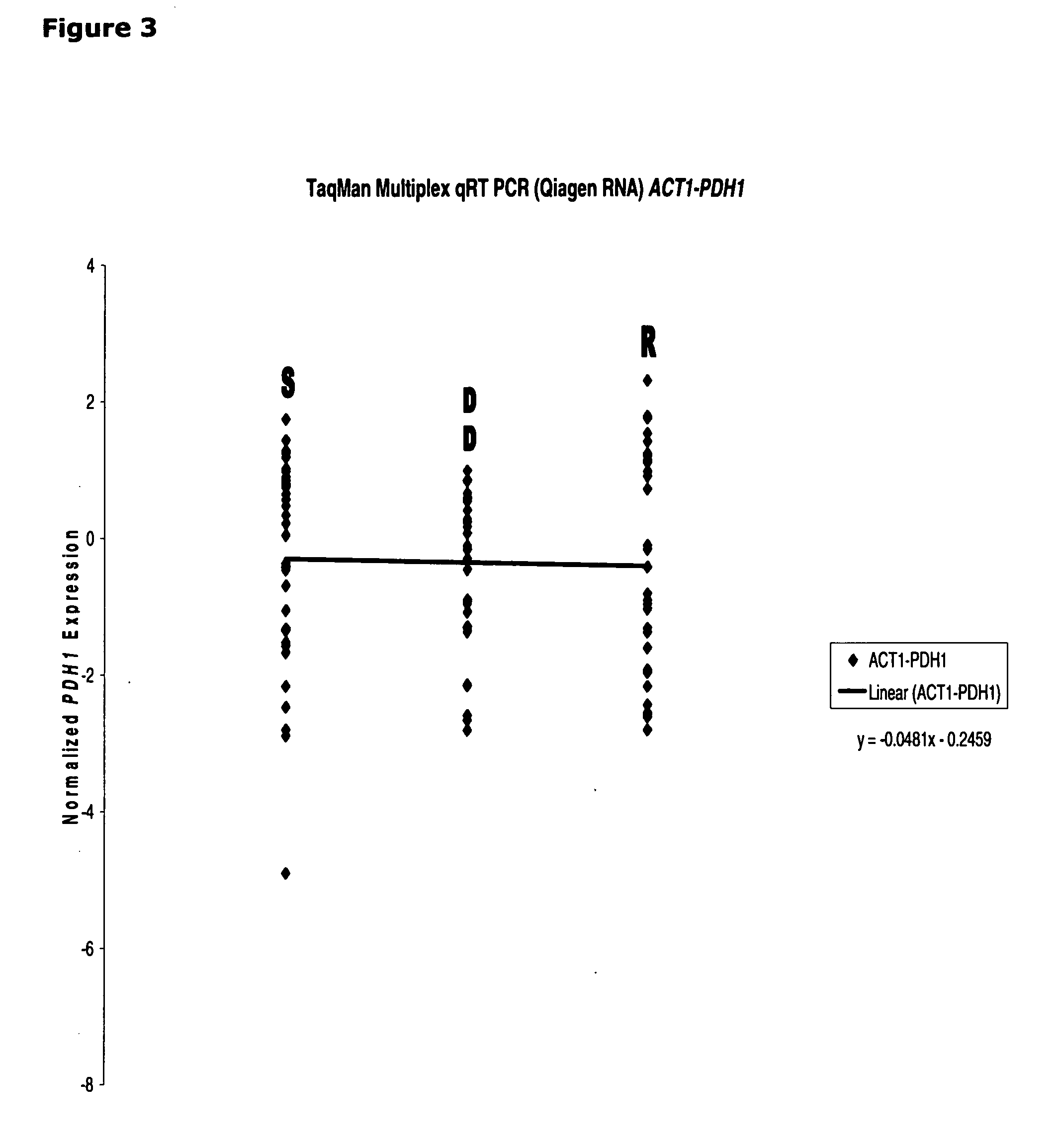Method for determining azole resistance in candida glabrata
a technology of azole resistance and candida glabrata, which is applied in the field of diagnosing antimicrobial resistance in yeast, can solve the problems of affecting the epidemiological data of the i>candida /i>species involved in wc, life-threatening systemic and deep-seated infection of the immuno-compromised host, and taking upwards of a week to obtain
- Summary
- Abstract
- Description
- Claims
- Application Information
AI Technical Summary
Problems solved by technology
Method used
Image
Examples
example 1
Anti-Fungal Susceptibility of Clinical Isolates Containing Candida glabrata: Determination By Microbroth Dilution Assay
[0105]One hundred seventy-five (175) Candida glabrata clinical isolates were retrieved from cervicovaginal swabs. Clinical isolates were obtained from cervicovaginal swabs of female patients suspected of having vulvovaginal candidiasis (WC) from across the United States. Candida glabrata PCR positive swabs were struck out on Candida CHROMagar, and individual Candida glabrata colonies were isolated for susceptibility testing using the microbroth dilution assay according to the Clinical and Laboratory Standards Institute protocol. Susceptibilities of these isolates to triazole anti-fungal drugs (e.g., fluconazole, voriconazole, and miconazole) were determined.
[0106]The distribution of these clinical isolates fell into three susceptibility groups with respect to fluconazole and voriconazole MIC breakpoints. For fluconazole, there were 30.9% susceptible (S)(≦8 μg / ml), 4...
example 2
Wide Variation in CDR1 Expression Levels in Azole Susceptible Candida glabrata Isolates
[0107]To identify if a multidrug resistance (MDR) gene may serve as an appropriate molecular marker for determining azole resistance in Candida glabrata, we investigated the relationship between increased expression of the MDR genes CDR1, PDH1, PDR1 and an increase in fluconazole minimum inhibitory concentrations.
[0108]Using qRT-PCR to monitor CDR1 mRNA expression and actin as reference (i.e., normalized using ACT1 mRNA expression), we observed a wide range of CDR1 expression levels among different isolates that were all identified as azole susceptible Candida glabrata isolates based on the microbroth dilution assay (i.e., ≦8 μg / mL fluconazole). Raw mRNA expression levels were calculated using the equation: (ACT1 Ct Score—Gene of Interest Ct Score). Upon comparing the raw scores for each of the Candida glabrata MDR genes, a correlation between increases in expression of these genes with an increas...
example 3
Linear Correlation Between Increased CDR1 Expression and Increased MIC
[0111]qRT-PCR was used to determine the CDR1 mRNA expression in all the clinical isolates (composed of susceptible [“S”], susceptible dose-dependent [“DD”] and resistant [“R”] groups). FIG. 1 depicts a strong linear correlation in resistant isolates having considerably higher expression of CDR1 in the S-DD and R groups. This observation is consistent with the notion that CDR1 expression is a good biomarker for azole resistant determination in Candida glabrata.
[0112]The correlation between CDR1 mRNA expression and azole susceptibility in clinical isolates is found to be unique. Both PDR1 (See, FIG. 2) and PDH1 (See, FIG. 3) mRNA expression (normalized by ACT1) failed to show any linear correlation, indicating only CDR1 (not PDR1 and PDH1) could serve as a good marker for azole resistant in Candida glabrata.
PUM
| Property | Measurement | Unit |
|---|---|---|
| concentrations | aaaaa | aaaaa |
| concentration | aaaaa | aaaaa |
| concentration | aaaaa | aaaaa |
Abstract
Description
Claims
Application Information
 Login to View More
Login to View More - R&D
- Intellectual Property
- Life Sciences
- Materials
- Tech Scout
- Unparalleled Data Quality
- Higher Quality Content
- 60% Fewer Hallucinations
Browse by: Latest US Patents, China's latest patents, Technical Efficacy Thesaurus, Application Domain, Technology Topic, Popular Technical Reports.
© 2025 PatSnap. All rights reserved.Legal|Privacy policy|Modern Slavery Act Transparency Statement|Sitemap|About US| Contact US: help@patsnap.com



